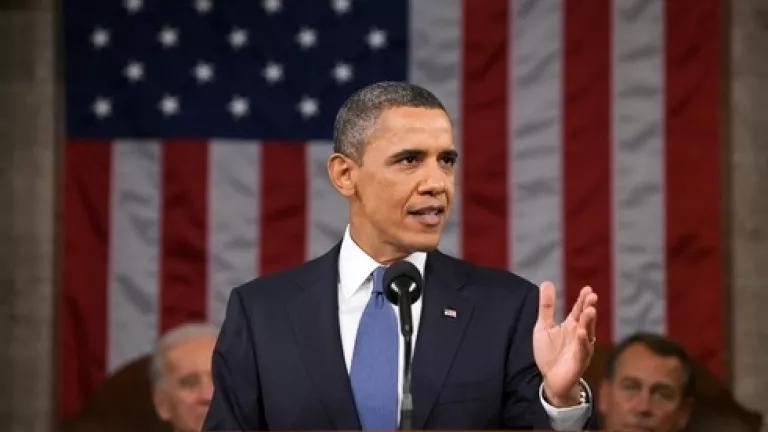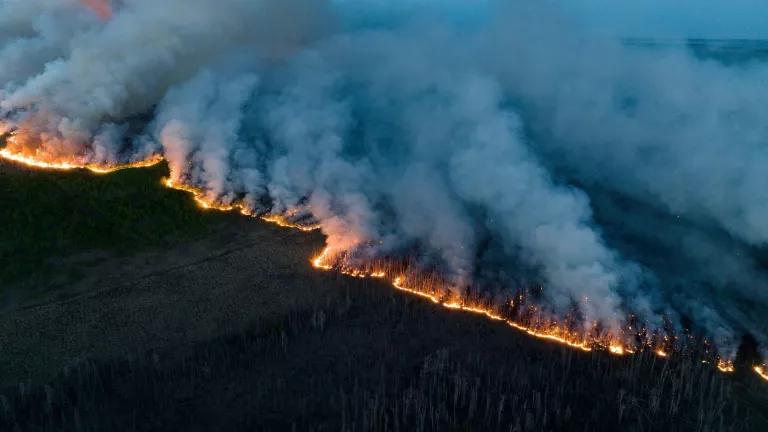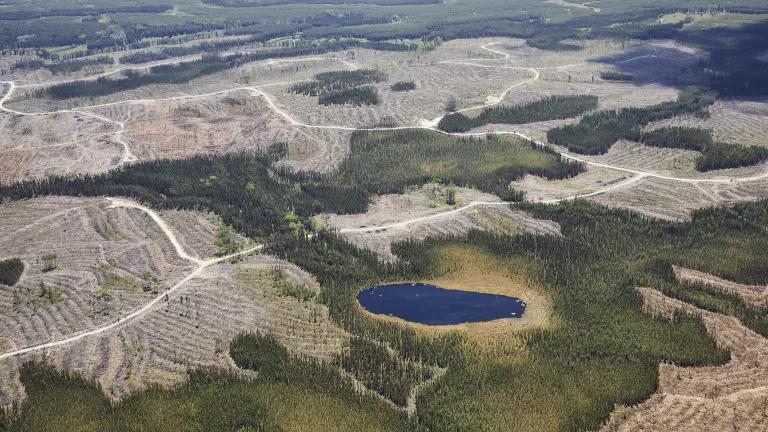
Photo credit: Pete Souza (Executive Office of the President of the United States) via Wikimedia Commons
In the first State of the Union address of his second term, U.S. President Barack Obama promised to tackle the greatest threat facing our planet – catastrophic climate change. The President made clear his continued commitment to use his executive authority to tackle U.S. carbon pollution and meet the country’s carbon pollution reduction targets. This strengthened federal policy should have implications for Canada which is lagging behind on its climate record. The President should also reject the Keystone XL tar sands pipeline as part of his commitment to confront climate change.
Americans recognize the imperative to act now. Last year, was the hottest year on record in the contiguous U.S. The effects of extreme climate change can be seen in every corner of the country: freak storms, raging wildfires, and persistent drought across the American heartland. These extreme weather events are costing jobs, creating massive economic losses, and wrecking homes and businesses. Climate change is already costing the U.S. economy billions of dollars. The total cost for Hurricane Sandy was $71 billion. Shrinking water levels along the Mississippi river has put more than $7 billion worth of goods at risk. And, sadly, extreme weather is costing lives. It’s no wonder that in a poll taken immediately after the State of the Union message, NRDC found that 65 percent of Americans think climate change is a serious or very serious problem.
President Obama’s commitment to tackle climate was unmistakable:
But for the sake of our children and our future, we must do more to combat climate change. Yes, it’s true that no single event makes a trend. But the fact is, the 12 hottest years on record have all come in the last 15. Heat waves, droughts, wildfires, and floods – all are now more frequent and intense. …
The good news is, we can make meaningful progress on this issue while driving strong economic growth. I urge this Congress to pursue a bipartisan, market-based solution to climate change, like the one John McCain and Joe Lieberman worked on together a few years ago. But if Congress won’t act soon to protect future generations, I will. I will direct my Cabinet to come up with executive actions we can take, now and in the future, to reduce pollution, prepare our communities for the consequences of climate change, and speed the transition to more sustainable sources of energy.
Obama’s climate promise should have implications for Canada.
President Obama has committed the U.S. to reducing carbon pollution by 17 percent by 2020 and is clearly forging new leadership on this critical issue. This is in stark contrast with the Canadian federal government as Canada has slid backward, and there are no indications they will be able to meet their 17 percent goal. Canada’s Commissioner of the Environment and Sustainable Development and the National Round Table on the Environment and the Economy have both said Canada does not have policies in place to meet its target. Canada’s climate track record reached a low point when Environment Minister Peter Kent announced that Canada would be the only country that has formally withdrawn from the Kyoto accord.
The President’s commitment to action should have implications for Canada’s growing tar sands oil industry and the decision on the Keystone XL tar sands pipeline. The Keystone XL tar sands pipeline is a fundamental element in the oil industry’s plan to triple production of tar sands oil from 2 million barrels per day (bpd) to 6 million bpd by 2030, and in the longer term to hike production to more than 9 million bpd. Approving a pipeline that would carry over 800,000 barrels of carbon intensive oil would be inconsistent with progress on climate.
Millions of citizens across America have sent President Obama their recommendations for making early progress on his climate promise. And last month, over 70 leading environmental organizations asked President Obama to take three actions :
- To elevate the issue of climate disruption and climate solutions in the public discourse.
- Use executive authority to make urgently needed reduction in U.S. carbon pollution by setting standards for America’s ageing power plant fleet.
- Reject dirty fuels starting with rejecting the Keystone XL tar sands pipeline because it would unlock vast amount of additional carbon we can’t afford to burn.
As my colleague Susan Casey-Lefkowitz reports, 48 environmental, civil rights, science and community leaders put themselves on the line, engaging in civil disobedience in front of the White House to show how deeply they care about the dangers of climate change and how important it is to follow strong words of commitment with action. In only a few days, tens of thousands of citizens will descend on Washington DC for the largest climate rally in U.S. history. The February 17 Forward on Climate Rally in Washington, D.C. will support President Obama’s pledge to tackle climate change and urge him to urge him to meet that pledge by rejecting Keystone XL and cutting power plant pollution. A diverse group of people across the country – and many Canadians – will bring a message that major expansion of tar sands development will take the U.S. backwards on fighting carbon pollution. As Robert Redford says in this video there is a need to take action to fight climate change and that means rejecting dirty fuels like tar sands. We will look to President Obama to take the next step and reject the Keystone XL tar sands pipeline.



